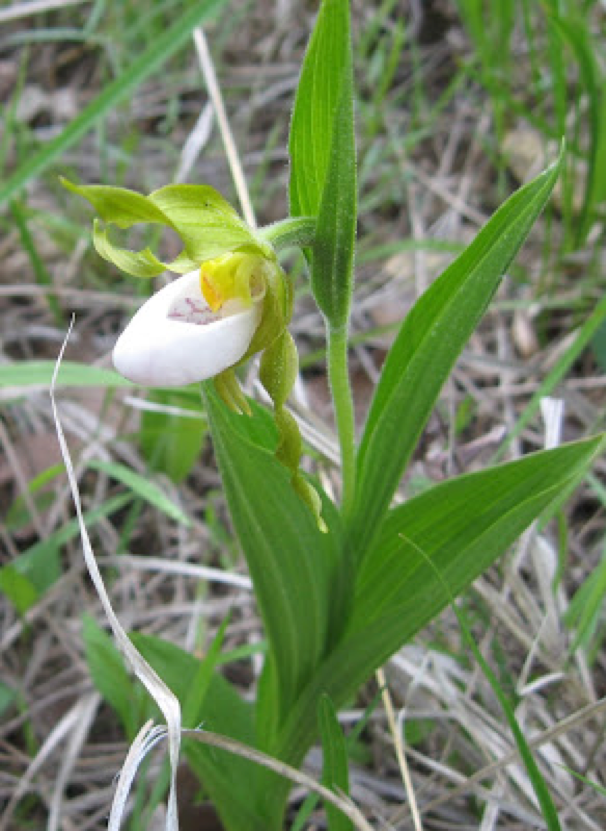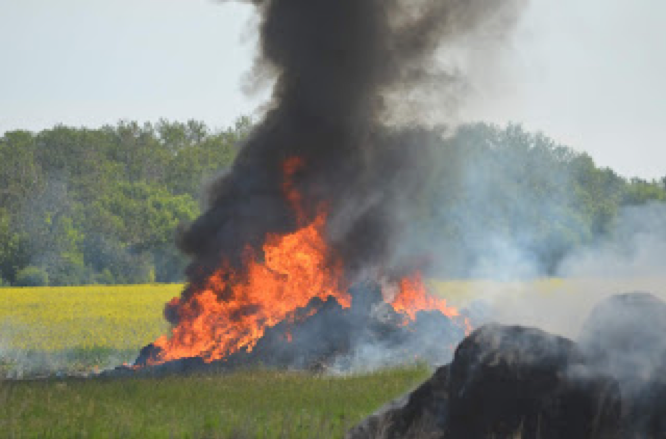New research suggests that pollution may be playing a bigger and more ominous role in pushing many of Canada's plants and animals to the brink than earlier thought.

One of the species at risk, the small white lady's slipper, Cypripedium candidum. Photo by Mason Brock.
Habitat loss, climate change and invasive species are often referred to as significant players in Earth's calamitous descent into a sixth Great Extinction. While those factors obviously play a part, this new study better recognizes the magnitude of the role played by yet another culprit in the piece - pollution. The authors of the research label contamination of our air, soil and water as a "pervasive, often invisible threat to biodiversity in Canada." And, up until now, the threat it poses, especially to vascular plants (ones that flower, bear fruit and seed), they suggest, has been underestimated by experts in the field. These include ones who serve on Ottawa's advisory agency, the Committee on the Status of Endangered Wildlife in Canada (COSEWIC). And, because so little is known about the subject, they've "frequently identified the threat of pollution as absent or negligible," even for species living within areas affected by it.
In order to design a better way of analyzing these threats, the seven-member team mapped known pollution sources and compared them with known ranges of 488 endangered species in this country. These included mammals, birds, plants, freshwater fish, reptiles, amphibians, arthropods (such as insects and crabs) and molluscs (like slugs and snails). It found that, on average, 57% of the habitat of each species also contained at least one pollution source.
"Our analysis shows that species at risk and pollution sources co-occur at a high rate in Canada. In general, the highest densities (of pollution sources and species-at-risk) are concentrated in the south, where the human population density is also highest. The richness of these creatures overlapped strongly with areas of greatest urbanization and landscape modification, such as Ontario, the Prairies and the Lower Mainland of BC."

Agricultural refuse is burned on a farm on the Prairies. A PinP photo.
Pollution. A challenge of both national and global magnitude
Quoting Government of Canada numbers, the study states: "Tens of thousands of chemicals exist in commerce today and the size of the global chemical industry is set to double by 2030. Contaminants such as flame retardants undergo transformations into more toxic breakdown products in the environment that contribute to heightened environmental effects.
"Each year in Canada, some five million tonnes of pollutants are released from seven thousand facilities. These have included about 700 pipeline spills over the past decade in which natural gas, crude oil and other contaminants have escaped into our environment."
"Each year in Canada, some five million tonnes of pollutants are released from seven thousand facilities. These have included about 700 pipeline spills over the past decade in which natural gas, crude oil and other contaminants have escaped into our environment."
Such spills are capable of either killing species immediately, or dealing "sub-lethal" blows which might sap their fitness, reduce their ability to reproduce or even deprive them of their food.

One of many sloughs in southern Manitoba. It's believed the spreading of livestock manure on farm fields contributes to the "greening" of wetlands such as this. A PinP photo.
"Runoff from urban, agricultural and industrial landscapes contaminates Canada's groundwater and downstream aquatic ecosystems. Finally, over 23 thousand known or suspected contaminated sites have been identified and classified in urban, rural and remote areas of Canada, many of which are contaminated with petroleum hydrocarbons, metals and/or persistent organic pollutants such as PCBs."

Jenny McCune - Ast. Prof. Dept. of Biological Sciences, University of Lethbridge, AB
The lead author of the study, Prof. Jenny McCune (l.) told PinP in an e-mail, "We did not measure the effect of different pollutants on individual species. We need more research to test the effects of specific contaminants on individual species at risk. We simply measured the potential for species to come into contact with different types of pollution based on the geographical overlap between sources of pollution and the known ranges of species at risk.
"The eastern prairies (MB and eastern SK) have sources of all 6 categories of pollution ( as defined by the International Union for the Conservation of Nature): household sewage and urban waste water, industrial and agricultural effluents, garbage and solid waste, air-borne pollutants, and excess energy"
The authors of the study, recently published in the journal, Facets, hope this new information will help us better understand just how much endangered wildlife are threatened, and where to go from here.
Other research only confirms the worst fears.

The Bakken formation (above) is a major oil deposit straddling two provinces and two states. US Geological Survey.
A study published last year in "Cogent Science," reminds us that the Bakken oilfield "overlaps with one of the largest areas for grassland birds in North America. Access to the oil is made possible by fracking and horizontal drilling, both controversial techniques which have been banned in other parts of the world. This paper illustrates that oil development is impacting species through habitat destruction, oil and noise pollution, invasive species and road infrastructure. Current wildlife policy in Saskatchewan is insufficient to protect species at risk in the Bakken formation."

The iconic Eastern meadowlark (Sturnella magna), a grasslands bird listed by COSEWIC as"threatened" in Canada. A PinP photo.
Grassland birds are said to be the among the group most vulnerable to environmental pressures in all of North America.
Other Stories by Larry Powel:
By: Larry Powell

I’m an eco-journalist living in Shoal Lake, Manitoba. I’m a member of the SWCC and the American Association for the Advancement of Science. I’m authorized to receive embargoed material through the Science Media Centre of Canada, the Royal Society and the World Health Organization. This allows me to “get a jump” on important stories by fleshing them out with fact-checks and interviews, in advance. Often, this arms me with a “hot-off-the-press” story that’s ready to go, the moment the embargo is lifted.
I’m prepared to supply interested publications with important stories in the field of the Earth Sciences – stories often stranger than fiction! I publish www.PlanetInPeril.ca (PinP), “Where science gets respect.”
